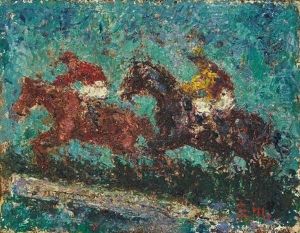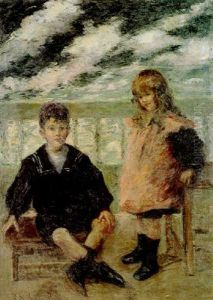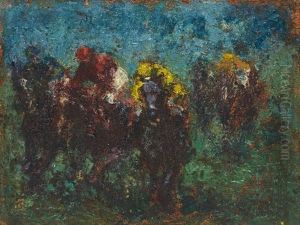Andres De Santa Maria Paintings
Andrés de Santa María was a pioneering Colombian painter, whose work and career played a significant role in the development of European-influenced art in Colombia. Born on December 11, 1860, in Bogotá, Santa María was exposed to the arts at an early age. He traveled to Europe for his artistic education, which was a common practice among affluent Colombian families who wanted their children to receive a comprehensive education.
In Europe, Santa María studied in Brussels at the Académie Royale des Beaux-Arts, and later in Paris, where he was influenced by the burgeoning Impressionist movement and the works of the Old Masters. His early work reflected the academic style of painting, but he gradually incorporated the techniques and aesthetic sensibilities of Impressionism into his art.
Santa María's career spanned several decades during which he actively participated in the European art scene, while maintaining ties to Colombia. He exhibited his work in prestigious venues, including the Paris Salon, and earned recognition and awards for his artistic achievements. Throughout his life, Santa María was a proponent of art education and played an instrumental role in the development of art institutions in Colombia.
Despite his European training and influences, Santa María's subject matter often reflected his Colombian heritage, and he is credited with introducing modern art movements to Colombia when he returned to his home country. His work includes landscapes, portraits, and historical scenes that combine European techniques with Colombian themes.
Andrés de Santa María's contributions to Colombian art were significant, and his legacy is preserved in the country's cultural history. He passed away on April 29, 1945, in Brussels. Today, his works are displayed in museums and galleries around the world, serving as a testament to his talent and his role as a bridge between European art and Latin American culture.

















